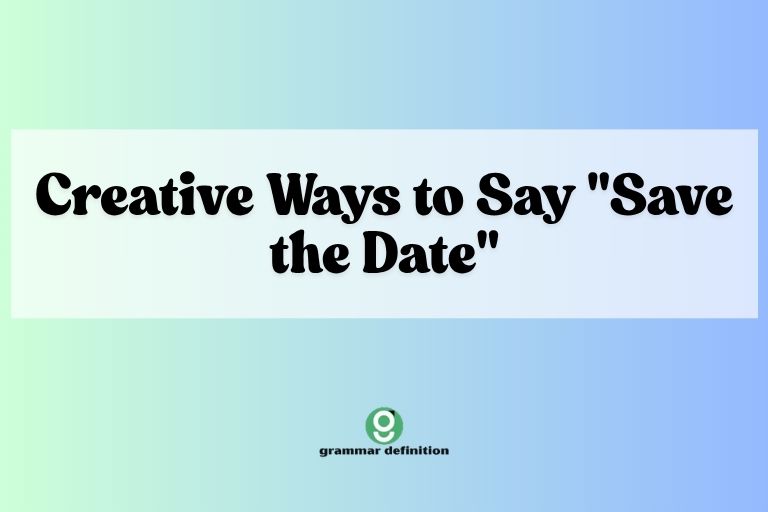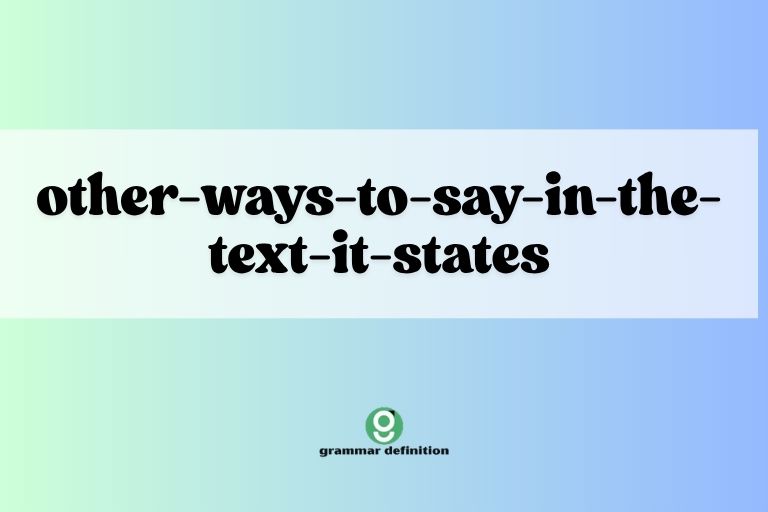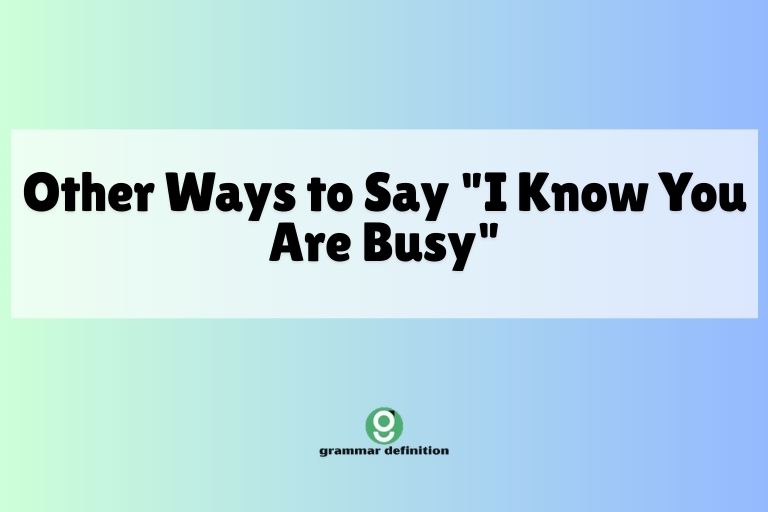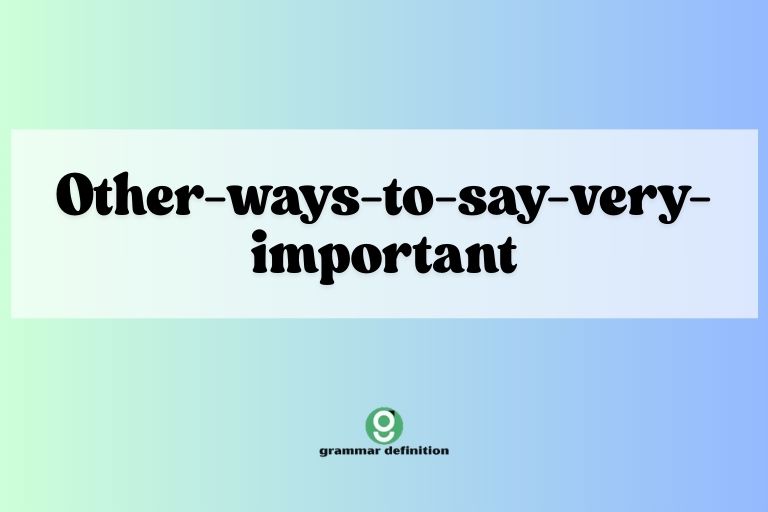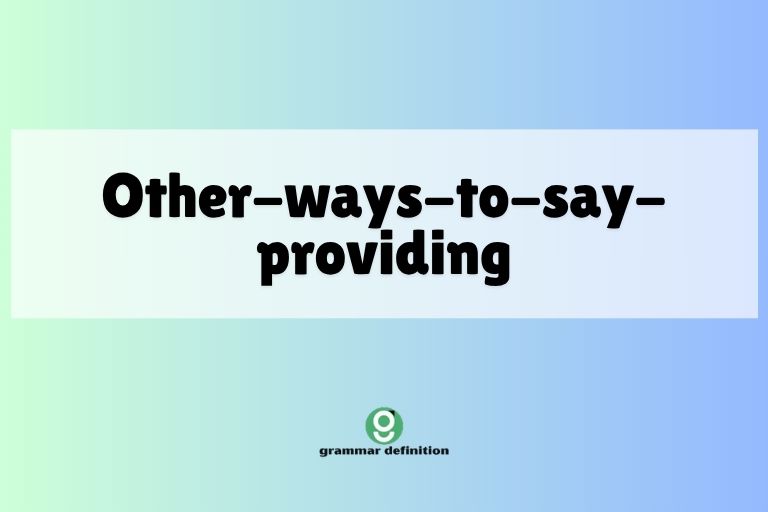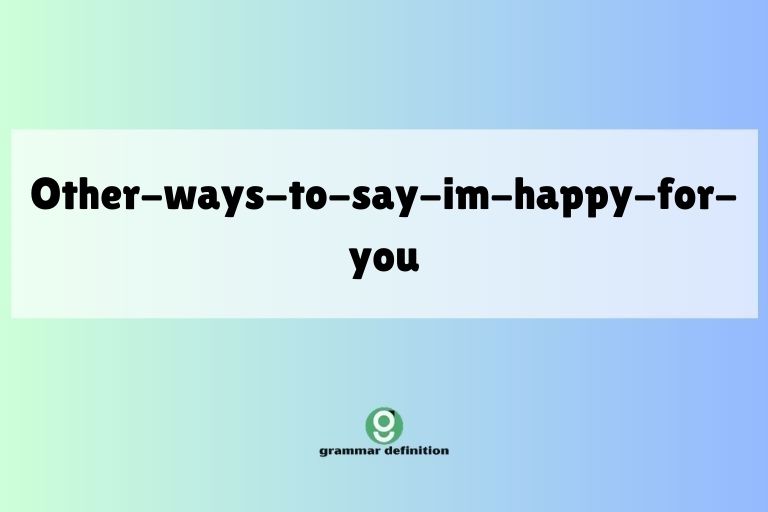Beyond “Not Good”: Expanding Your English Vocabulary
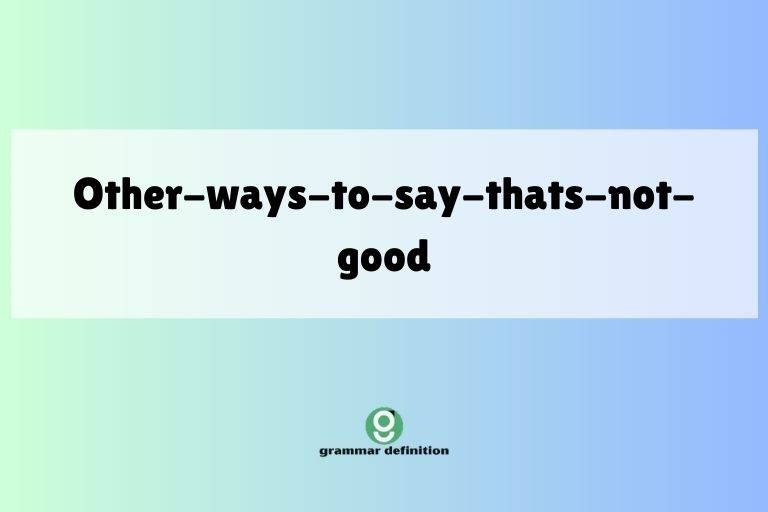
The phrase “not good” is a simple and straightforward way to express disapproval or indicate a problem. However, relying solely on this phrase can make your English sound limited and repetitive.
Mastering alternative expressions will not only enrich your vocabulary but also allow you to convey nuances and shades of meaning that “not good” simply cannot capture. This article explores a wide range of alternatives to “not good,” offering detailed explanations, examples, and practice exercises to help you confidently express yourself in various contexts.
Whether you’re an ESL learner aiming for fluency or a native speaker seeking to refine your language skills, this guide will provide valuable insights into more sophisticated and expressive communication.
Table of Contents
- Introduction
- Definition: Alternatives to “Not Good”
- Structural Breakdown
- Types and Categories of Alternatives
- Examples
- Usage Rules
- Common Mistakes
- Practice Exercises
- Advanced Topics
- FAQ
- Conclusion
Definition: Alternatives to “Not Good”
Alternatives to “not good” encompass a wide array of words and phrases that convey disapproval, dissatisfaction, or a negative assessment. These alternatives vary in intensity, formality, and specific meaning, allowing for more precise and nuanced communication.
They can range from mild expressions like “suboptimal” to strong condemnations like “atrocious.” The choice of alternative depends heavily on the context, the speaker’s relationship with the listener, and the desired impact.
The function of these alternatives is to provide a more descriptive and impactful way of expressing a negative sentiment. Using a broader vocabulary demonstrates linguistic proficiency and allows for more effective communication.
Consider the difference between saying “The food was not good” and “The food was inedible.” The latter conveys a much stronger and more specific message.
Context plays a crucial role in selecting the appropriate alternative. In a formal setting, using sophisticated vocabulary like “unacceptable” or “deficient” might be preferred.
In a casual setting, expressions like “lousy” or “awful” might be more suitable. Understanding these nuances is essential for effective communication.
Structural Breakdown
The structure of alternatives to “not good” can vary significantly depending on the type of expression used. Some alternatives are single words (e.g., “terrible,” “inadequate”), while others are phrases (e.g., “leaves much to be desired,” “not up to par”).
The grammatical structure of these alternatives also differs. Adjectives modify nouns, verbs express actions, and idiomatic expressions often have unique and figurative meanings.
When using adjectives, the structure is typically: Subject + Verb (to be) + Adjective. For example: “The performance was disappointing.” When using verbs, the structure can vary depending on the intended meaning. For example: “The plan failed.” Idiomatic expressions often have a fixed structure and meaning that cannot be derived from the individual words. For example: “That’s a recipe for disaster.”
Understanding the grammatical structure of these alternatives is crucial for using them correctly. Pay attention to subject-verb agreement, tense, and the appropriate use of articles and prepositions.
Proper syntax ensures that your message is clear and grammatically sound.
Types and Categories of Alternatives
Alternatives to “not good” can be categorized into several types, each with its own characteristics and usage patterns. Understanding these categories can help you choose the most appropriate expression for a given situation.
Negative Adjectives
Negative adjectives are words that describe something as being undesirable, unfavorable, or of poor quality. They are a direct and common way to express disapproval. Examples include: bad, terrible, awful, dreadful, horrible, unacceptable, unsatisfactory, inadequate, deficient, substandard, inferior, flawed, imperfect, dismal, atrocious.
Negative Verbs
Negative verbs are verbs that express a negative action or outcome. They can be used to indicate failure, decline, or a lack of success. Examples include: fail, decline, deteriorate, worsen, disappoint, collapse, crumble, flounder, backfire, disappoint, underperform.
Idiomatic Expressions
Idiomatic expressions are phrases whose meaning cannot be understood from the literal meanings of the individual words. They often add color and emphasis to your language. Examples include: a recipe for disaster, a waste of time, a dead end, a lost cause, a flop, a letdown, a pain in the neck, a thorn in one’s side, not up to par, leaves much to be desired.
Understatement
Understatement is a figure of speech in which something is presented as being less significant than it actually is. It can be used for humorous or ironic effect. Examples include: less than ideal, not the best, not great, could be better, not ideal, slightly disappointing, a bit of a setback.
Euphemisms
Euphemisms are mild or indirect words or expressions substituted for ones considered to be too harsh or blunt when referring to something unpleasant or embarrassing. Examples include: passed away (instead of died), differently abled (instead of disabled), challenged (instead of having difficulties), economically disadvantaged (instead of poor), pre-owned (instead of used), let go (instead of fired).
Examples
This section provides extensive examples of how to use alternatives to “not good” in various contexts. The examples are organized by category to illustrate the different types of expressions and their specific meanings.
Negative Adjectives Examples
The following table provides examples of sentences using negative adjectives to express disapproval or dissatisfaction.
| Sentence | Context |
|---|---|
| The weather today is terrible. | Describing the weather |
| His behavior was unacceptable. | Commenting on someone’s actions |
| The quality of the product is substandard. | Evaluating a product |
| The service at the restaurant was awful. | Describing customer service |
| The results of the experiment were disappointing. | Analyzing scientific data |
| The movie was horrible. | Reviewing a film |
| The food tasted dreadful. | Describing the taste of food |
| The performance was inadequate. | Assessing a performance |
| The plan was flawed from the beginning. | Critiquing a plan |
| The situation is dismal. | Describing a situation |
| The painting is imperfect. | Critiquing art |
| The acting was atrocious. | Critiquing acting |
| The attempt was unsuccessful. | Describing an attempt |
| The car is in bad shape. | Describing the condition of a car |
| The explanation was deficient. | Critiquing an explanation |
| The quality of the work was inferior. | Evaluating work |
| The outcome was unsatisfactory. | Describing an outcome |
| The news is grim. | Describing news |
| The state of affairs is bleak. | Describing a situation |
| The response was negative. | Describing a response |
| The experience was unpleasant. | Describing an experience |
| The atmosphere was oppressive. | Describing an atmosphere |
| The feeling was uncomfortable. | Describing a feeling |
| The situation is precarious. | Describing a situation |
| The investment was risky. | Describing an investment |
| The decision was unwise. | Describing a decision |
| The advice was poor. | Describing advice |
| The judgment was questionable. | Describing a judgment |
| The idea was silly. | Describing an idea |
Negative Verbs Examples
The following table provides examples of sentences using negative verbs to express a negative action or outcome.
| Sentence | Context |
|---|---|
| The plan failed. | Describing the outcome of a plan |
| The economy declined. | Describing economic conditions |
| The situation deteriorated. | Describing a worsening situation |
| His health worsened. | Describing someone’s health |
| The team underperformed. | Evaluating team performance |
| The business collapsed. | Describing a business failure |
| The deal fell through. | Describing a failed deal |
| The project floundered. | Describing a struggling project |
| The strategy backfired. | Describing a strategy with negative consequences |
| The negotiations disappointed. | Describing disappointing negotiations |
| The attempt miscarried. | Describing a failed attempt |
| The rumor damaged his reputation. | Describing harm to reputation |
| The storm devastated the town. | Describing a natural disaster |
| The investment lost money. | Describing a financial loss |
| The company struggled to survive. | Describing a company’s difficulties |
| The argument escalated into a fight. | Describing an escalating argument |
| The relationship soured over time. | Describing a deteriorating relationship |
| The crops withered in the drought. | Describing the effects of a drought |
| The evidence contradicted his statement. | Describing conflicting evidence |
| His story unraveled under scrutiny. | Describing a story falling apart |
| The scheme imploded spectacularly. | Describing a scheme failing dramatically |
| The accusations undermined his authority. | Describing harm to authority |
| His efforts yielded no results. | Describing unsuccessful efforts |
| The market crashed unexpectedly. | Describing a market crash |
| The talks stalled due to disagreements. | Describing stalled negotiations |
| The project languished for months. | Describing a project’s stagnation |
| The initiative fizzled out quickly. | Describing an initiative failing quickly |
| The alliance fractured under pressure. | Describing a broken alliance |
Idiomatic Expressions Examples
The following table provides examples of sentences using idiomatic expressions to express disapproval or dissatisfaction.
| Sentence | Context |
|---|---|
| That idea is a recipe for disaster. | Expressing strong disapproval of an idea |
| Trying to fix it yourself would be a waste of time. | Discouraging someone from attempting something |
| This investigation is a dead end. | Describing a fruitless investigation |
| Trying to convince him is a lost cause. | Describing a hopeless situation |
| The play was a flop. | Describing a failed performance |
| The new product was a letdown. | Describing a disappointing product |
| Dealing with this issue is a pain in the neck. | Expressing frustration with a problem |
| His constant complaints are a thorn in my side. | Expressing annoyance with someone’s behavior |
| The quality of their work is not up to par. | Evaluating the quality of work |
| The presentation leaves much to be desired. | Expressing dissatisfaction with a presentation |
| The whole affair was a complete shambles. | Describing a chaotic situation |
| The project turned out to be a fool’s errand. | Describing a pointless task |
| His argument doesn’t hold water. | Describing a weak argument |
| That’s the last straw! | Expressing the limit of one’s patience |
| We’re back to square one. | Describing a return to the beginning |
| He’s barking up the wrong tree. | Describing someone pursuing the wrong course |
| That’s just papering over the cracks. | Describing a superficial solution |
| This situation is going downhill. | Describing a deteriorating situation |
| The whole thing is a house of cards. | Describing a fragile structure or plan |
| We’re in dire straits. | Describing a difficult situation |
| He’s out of his depth. | Describing someone lacking the necessary skills |
| That’s a shot in the dark. | Describing a wild guess |
| We’re skating on thin ice. | Describing a risky situation |
| That’s water under the bridge. | Describing something from the past that is no longer relevant |
| He’s grasping at straws. | Describing someone desperately seeking solutions |
| That’s a can of worms. | Describing a complex and problematic situation |
| His plan is full of holes. | Describing a flawed plan |
Understatement Examples
The following table provides examples of sentences using understatement to express disapproval or dissatisfaction in a subtle way.
| Sentence | Context |
|---|---|
| The situation is less than ideal. | Describing a difficult situation |
| The performance was not the best. | Evaluating a performance |
| The weather is not great. | Describing the weather |
| The results could be better. | Expressing hope for improvement |
| The outcome was not ideal. | Describing an unfavorable outcome |
| The experience was slightly disappointing. | Describing a mildly negative experience |
| This is a bit of a setback. | Describing a minor obstacle |
| That’s not quite right. | Pointing out a minor error |
| It’s not exactly perfect. | Acknowledging imperfections |
| The situation is somewhat problematic. | Describing a potentially difficult situation |
| The response was not entirely positive. | Describing a mixed response |
| The execution was not flawlessly executed. | Subtly critiquing execution |
| The feedback was less than enthusiastic. | Describing lukewarm feedback |
| It’s not without its challenges. | Acknowledging difficulties |
| The situation is a little complicated. | Describing a complex situation |
| The progress is slower than anticipated. | Describing slow progress |
| The result is not entirely satisfactory. | Expressing mild dissatisfaction |
| The response was not overwhelmingly positive. | Describing a muted positive response |
| The solution is not completely ideal. | Acknowledging imperfections in a solution |
| It’s not as easy as it looks. | Highlighting the difficulty of something |
Euphemisms Examples
The following table provides examples of sentences using euphemisms to soften the expression of something negative or unpleasant.
| Sentence | Context |
|---|---|
| He passed away last night. | Softening the news of someone’s death |
| The company is letting go of some employees. | Softening the news of layoffs |
| The car is pre-owned. | Softening the fact that the car is used |
| He is economically disadvantaged. | Softening the description of poverty |
| She is differently abled. | Softening the description of a disability |
| The project is experiencing challenges. | Softening the description of problems |
| The company is downsizing. | Softening the description of layoffs |
| The food is not fresh. | Softening the description of stale food |
| He is between jobs. | Softening the fact that someone is unemployed |
| We need to rethink our strategy. | Softening the fact that the current strategy is failing |
| The product is no longer in production. | Softening the fact that the product was discontinued |
| There was some collateral damage. | Softening the description of unintended harm |
| The company is restructuring. | Softening the description of company changes |
| He is vertically challenged. | Softening the description of someone being short |
| She is follically challenged. | Softening the description of someone being bald |
| We need to rightsize the organization. | Softening the description of layoffs |
| The situation has room for improvement. | Softening the criticism of a situation |
| The item is previously enjoyed. | Softening the fact that the item is used |
| He is in his twilight years. | Softening the description of someone being old |
Usage Rules
Using alternatives to “not good” effectively requires understanding the specific nuances and connotations of each expression. Here are some key usage rules to keep in mind:
- Consider the context: The formality of the situation should influence your choice of words. Use more formal language in professional settings and more casual language in informal settings.
- Consider your audience: Be mindful of your audience’s level of understanding. Avoid using overly complex or obscure vocabulary if your audience is not familiar with it.
- Be specific: Choose an alternative that accurately reflects the specific reason why something is “not good.” For example, instead of saying “The food was not good,” say “The food was bland” or “The food was overcooked.”
- Vary your language: Avoid using the same alternatives repeatedly. Vary your vocabulary to keep your language interesting and engaging.
- Pay attention to tone: Be aware of the tone you are conveying. Some alternatives are more critical or harsh than others. Choose an alternative that matches the tone you want to convey.
Exceptions and Special Cases: Some idiomatic expressions have specific grammatical requirements or usage restrictions. Be sure to research the correct usage of any idiomatic expression before using it.
Common Mistakes
Learners often make common mistakes when using alternatives to “not good.” Here are some frequent errors and how to avoid them:
- Incorrect word choice: Using an alternative that does not accurately reflect the intended meaning.
- Incorrect: The movie was deficient. (This implies a lack of something essential, which may not be the intended meaning.)
- Correct: The movie was terrible.
- Misusing idiomatic expressions: Using an idiomatic expression incorrectly or in an inappropriate context.
- Incorrect: He’s grasping at straws to solve the problem of world peace. (The idiom is usually used for personal problems.)
- Correct: He’s grasping at straws to save his failing business.
- Using overly formal language in informal settings: Using language that sounds unnatural or pretentious in a casual setting.
- Incorrect: The party was suboptimal.
- Correct: The party was lame.
- Overusing euphemisms: Using euphemisms excessively, which can sound insincere or evasive.
- Incorrect: The company is rightsizing, streamlining, and rethinking its strategy (all at once, when it’s just firing people).
- Correct: The company is laying off employees.
Practice Exercises
These exercises will help you practice using alternatives to “not good” in different contexts.
Exercise 1: Fill in the Blanks
Fill in the blanks with an appropriate alternative to “not good” from the list provided. (Answers are below.)
- The weather today is __________. (awful, splendid, delightful)
- The quality of the product is __________. (substandard, excellent, superior)
- His behavior was __________. (unacceptable, commendable, admirable)
- The results of the experiment were __________. (disappointing, promising, encouraging)
- The service at the restaurant was __________. (terrible, impeccable, outstanding)
- The movie was __________. (horrible, fantastic, superb)
- The food tasted __________. (dreadful, delicious, exquisite)
- The performance was __________. (inadequate, exceptional, remarkable)
- The plan was __________. (flawed, perfect, impeccable)
- The situation is __________. (dismal, promising, bright)
Answers:
- awful
- substandard
- unacceptable
- disappointing
- terrible
- horrible
- dreadful
- inadequate
- flawed
- dismal
Exercise 2: Rewriting Sentences
Rewrite the following sentences using a more descriptive alternative to “not good.”
| Original Sentence | Rewritten Sentence |
|---|---|
| The presentation was not good. | The presentation left much to be desired. |
| The plan is not good. | The plan is a recipe for disaster. |
| The food at the restaurant was not good. | The food at the restaurant was inedible. |
| The weather is not good. | The weather is dreadful. |
| His performance was not good. | His performance was subpar. |
| The outcome was not good. | The outcome was unfavorable. |
| The situation is not good. | The situation is precarious. |
| The attempt was not good. | The attempt was unsuccessful. |
| The result was not good. | The result was unsatisfactory. |
| The quality is not good. | The quality is inferior. |
Exercise 3: Contextual Choice
Choose the most appropriate alternative to “not good” for each context.
| Context | Alternatives | Correct Answer |
|---|---|---|
| Describing a failed business venture in a formal report. | (a) a flop (b) collapsed (c) lousy | (b) collapsed |
| Expressing disappointment with a friend’s behavior in a casual conversation. | (a) unacceptable (b) disappointing (c) substandard | (b) disappointing |
| Describing the quality of a product that is below expectations in a professional review. | (a) not up to par (b) atrocious (c) inferior | (c) inferior |
| Expressing mild dissatisfaction with the weather in a casual conversation. | (a) terrible (b) less than ideal (c) dismal | (b) less than ideal |
| Describing a plan that is likely to fail in a serious discussion. | (a) a recipe for disaster (b) a waste of time (c) a pain in the neck | (a) a recipe for disaster |
| Describing a performance that lacked energy in a review. | (a) inadequate (b) a dead end (c) grim | (a) inadequate |
| Describing a food item that tastes bad in a casual conversation. | (a) dreadful (b) challenging (c) bleak | (a) dreadful |
| Describing a situation that will likely worsen in a serious discussion. | (a) going downhill (b) pre-owned (c) vertically challenged | (a) going downhill |
| Describing an attempt that yielded no results in a formal report. | (a) a shot in the dark (b) fizzled out (c) unsuccessful | (c) unsuccessful |
| Describing behavior that is not allowed in a formal setting. | (a) barking up the wrong tree (b) unacceptable (c) full of holes | (b) unacceptable |
Advanced Topics
For advanced learners, exploring the subtleties of connotation and register can further enhance their ability to use alternatives to “not good” effectively. Connotation refers to the emotional associations or implications of a word, while register refers to the level of formality or informality of language.
Understanding these concepts allows for more precise and nuanced communication.
For example, the word “atrocious” has a stronger negative connotation than the word “bad.” Similarly, the phrase “leaves much to be desired” is more formal than the phrase “not up to snuff.” By carefully considering the connotations and register of different alternatives, learners can fine-tune their language to achieve the desired effect.
Additionally, exploring the use of figurative language, such as metaphor and simile, can add depth and richness to your expressions of disapproval. For example, instead of saying “The plan is not good,” you could say “The plan is a house of cards,” which is a more vivid and memorable way of expressing the same idea.
FAQ
- Why is it important to use alternatives to “not good”?
Using alternatives to “not good” enhances your vocabulary, allows for more precise communication, and makes your English sound more sophisticated and engaging. It helps you convey nuances and shades of meaning that “not good” simply cannot capture.
- How do I choose the right alternative to “not good”?
Consider the context, your audience, and the specific reason why something is “not good.” Choose an alternative that accurately reflects the intended meaning and matches the tone you want to convey.
- What are some common mistakes to avoid when using alternatives to “not good”?
Avoid incorrect word choice, misusing idiomatic expressions, using overly formal language in informal settings, and overusing euphemisms.
- How can I improve my vocabulary of alternatives to “not good”?
Read widely, pay attention to how native speakers use language, and practice using new words and phrases in your own writing and speaking.
- Are there any resources I can use to learn more about alternatives to “not good”?
Yes, there are many online dictionaries, thesauruses, and grammar guides that can provide additional information and examples. You can also consult with a language teacher or tutor.
- How do I know if an idiomatic expression is appropriate for the context?
Idiomatic expressions are often culturally specific, so it’s important to consider your audience and the setting. If you’re unsure, it’s best to err on the side of caution and use more direct language. You can also research the origin and usage of the idiom to ensure it fits
the tone and formality of your communication.
Conclusion
Mastering alternatives to “not good” is a valuable step in enhancing your English vocabulary and communication skills. By understanding the different types of expressions, their usage rules, and common mistakes to avoid, you can confidently express disapproval or dissatisfaction in a more nuanced and effective way.
Practice the exercises provided and continue to expand your vocabulary through reading and real-world application. With consistent effort, you’ll be able to convey your thoughts and feelings with greater precision and impact.

